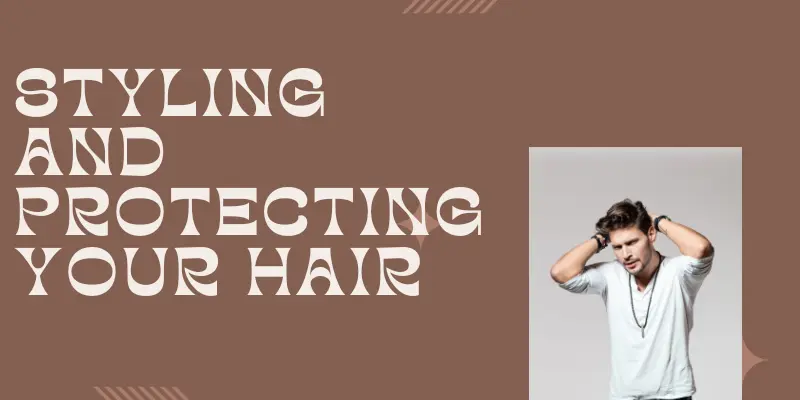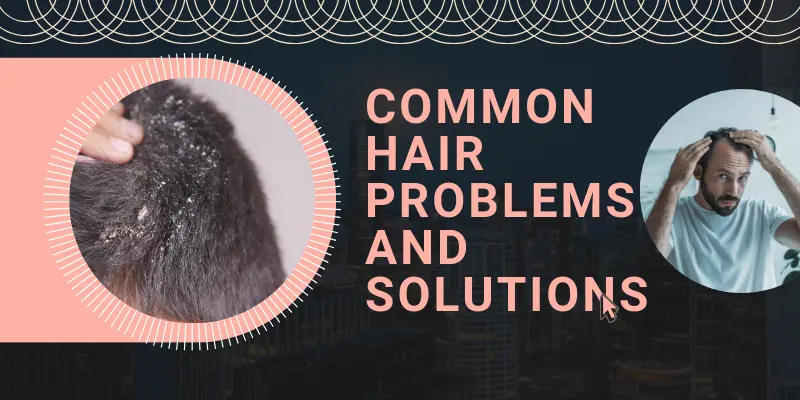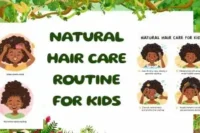Best Hair Care Routine for Men- Easy Steps to Healthier, Stylish Hair
Published: 29 Mar 2025
Did you know that 60% of men face hair issues like thinning, dryness, or dandruff by age 35? Tired of bad hair days or endless products that don’t deliver? You’re not alone. Many guys struggle with oily scalps, frizz, or unmanageable hair simply because they lack a proper routine. But here’s the good news: healthy, great-looking hair is simpler than you think. This guide reveals the best hair care routine for men, easy steps to transform your hair, and boost your confidence. Let’s get started!
1. Know Your Hair Type
Before diving into products or routines, it’s crucial to understand your hair type, as different hair types need different care.
- Oily Hair: Gets greasy quickly.
- Dry Hair: Feels rough or frizzy.
- Normal Hair: Balanced, neither too oily nor dry.
- Curly Hair: Needs extra moisture.
- Thinning Hair: Requires gentle care.
Example: If your hair feels greasy by the end of the day, you likely have oily hair. If it feels rough and hard to manage, it’s probably dry.
Tip: Use a quiz or checklist to help you identify your hair type.
2. Daily and Weekly Hair Care Routine
A good daily and weekly hair care routine keeps your hair strong and healthy. Start each day with a gentle brush and leave-in conditioner if needed.

Wash your hair 2–3 times a week using a mild, sulfate-free shampoo. Deep condition once a week to restore moisture. Avoid heat styling too often to prevent damage.
Step 1: Washing Your Hair
- How Often: Wash your hair 2–3 times a week. Overwashing can strip natural oils, while underwashing can lead to buildup.
- Shampoo: Use a shampoo that matches your hair type. For example:
- Oily hair: Clarifying shampoo.
Dry hair: Moisturizing shampoo.
- How to Wash: Wet your hair, apply shampoo, and gently massage your scalp with your fingertips. Rinse thoroughly.
Example: For dry hair, try a hydrating shampoo with argan oil.
Step 2: Conditioning
- Why Conditioner? It keeps your hair soft, hydrated, and easy to comb.
- How to Use: Apply conditioner to the ends of your hair. Leave it for 2–3 minutes, then rinse with cool water.
Tip: Avoid applying conditioner to your scalp if you have oily hair.
Step 3: Scalp Care
- Scalp Scrubs: Use a scalp scrub once a week to remove dirt and dead skin.
- Massage: Gently massage your scalp to improve blood flow and promote hair growth.
- Treatments: If you have dandruff, use a shampoo with tea tree oil or zinc pyrithione.
Example: Try a scalp scrub with peppermint for a refreshing feel.
3. Styling and Protecting Your Hair
Styling your hair the right way helps maintain its health and shine. Always use a heat protectant before using hot tools.

Avoid tight hairstyles that pull on your roots and cause breakage. Use gentle accessories like scrunchies instead of elastic bands. Protective styles like braids or buns can also reduce damage and help retain length.
Styling Products
- Pomade: For a shiny, polished look.
- Wax: Add texture and hold.
- Gel: Provides strong hold and shine.
- Clay: Offers a natural matte finish.
Example: Use a matte clay for a casual, textured look.
- Limit Heat Tools: Avoid excessive use of blow dryers, straighteners, or curling irons.
- Heat Protectant: If you must use heat, apply a heat protectant spray first.
Sun and Chlorine Protection
- Sun: Wear a hat or use a UV-protectant spray.
- Chlorine: Rinse your hair before and after swimming.
Tip: Use a leave-in conditioner with SPF for extra protection.
4. Healthy Habits for Great Hair
If you want strong, shiny, and beautiful hair, building healthy daily habits is key. What you eat, how you care for your hair, and even how much water you drink all make a big difference. Small lifestyle changes can give your hair a natural boost without expensive treatments.
Regular Haircuts
Getting a trim every 4–6 weeks helps remove split ends and keeps your hair looking fresh and neat. Even if you’re growing your hair long, trimming a little at a time will make it healthier and prevent breakage.
Healthy Diet
Your hair needs the right nutrients to grow well.
- Protein: Found in eggs, chicken, and beans—this helps build strong hair strands.
- Omega-3s: Fish like salmon give your hair a healthy shine.
- Vitamins: Nuts, seeds, and fresh fruits feed your hair from the inside.
Example: Eating salmon with a side of spinach can help make your hair stronger and more resistant to damage.
Stay Hydrated
Water isn’t just good for your skin—it’s also important for your hair. Drinking enough water each day keeps your hair soft, reduces dryness, and helps your scalp stay healthy. Aim for at least 6–8 glasses daily.
5. Common Hair Problems and Solutions
Many people face common hair problems like dryness, split ends, dandruff, frizz, and hair fall. These issues often stem from poor hair care habits, harsh products, or lack of hydration.

Using nourishing shampoos, deep conditioners, and regular trims can help. A healthy scalp routine is also essential to prevent buildup and irritation. Understanding your hair type makes choosing the right solutions easier.
Thinning Hair
- Use volumizing shampoos and avoid heavy products.
- Consider treatments like minoxidil or consult a dermatologist.
Curly Hair
- Use leave-in conditioners and avoid brushing dry hair.
- Try a diffuser when blow-drying to reduce frizz.
Dry Hair
- Deep conditioning once a week.
- Use natural oils like coconut or argan oil for extra moisture.
Example: If you have dandruff, try a tea tree oil shampoo.
Conclusion
Taking care of your hair doesn’t have to be complicated. By following this best hair care routine for men, you can achieve healthier, stronger, and more stylish hair. You can also explore top hair salon treatments for healthier hair. Remember, great hair starts with consistent care and the right habits. So, take the first step today and explore how this routine can transform your hair game. Your confidence will thank you!
“Your hair is your crown, wear it proudly. Start your journey to better hair today and see the difference a little care can make!”
FAQs
Men should ideally wash their hair 2–3 times a week to maintain a balance between cleanliness and natural oils. Washing too often can strip the scalp of essential oils, leading to dryness and irritation. If your hair tends to get oily quickly, you can increase washing to daily or every other day. For dry or coarse hair, reduce washing to once or twice a week to preserve moisture. Additionally, always use a gentle shampoo suited to your hair type to avoid scalp irritation.
The best shampoo depends on your hair and scalp needs. For oily scalps, a clarifying shampoo helps remove excess oil and buildup. If your hair is dry or damaged, a moisturizing shampoo enriched with natural oils or proteins adds softness and strength. Men with sensitive scalps should opt for a mild, sulfate-free formula to prevent itching and irritation. Also, consider shampoos with ingredients like biotin or keratin if you want to promote hair strength and growth.
Yes, conditioners are essential for healthy hair. They hydrate and smooth the hair shaft, making it easier to detangle and style. Apply conditioner mainly to the ends of the hair rather than the scalp to avoid greasy buildup. Regular conditioning helps prevent split ends, frizz, and breakage. Even men with oily hair can benefit from light, leave-in conditioners or hair creams that provide moisture without weighing hair down.
Dandruff can be managed with the right care and products. Use an anti-dandruff shampoo containing active ingredients like zinc pyrithione, ketoconazole, or tea tree oil. Wash your hair regularly to prevent oil and dead skin buildup, but avoid over-washing, which can dry out the scalp. Maintaining a balanced diet and staying hydrated also helps overall scalp health. For persistent dandruff, consult a dermatologist for specialized treatments.
Styling depends on your hair type and desired look. Use products like pomade, wax, clay, or gel depending on whether you want hold, shine, or texture. Start with a small amount of product and gradually add more for control without weighing hair down. Use a comb or fingers to shape the hair, and always style on slightly damp hair for better results. Regular trims also help maintain a clean, polished look.
Absolutely! A nutritious diet plays a vital role in hair growth and strength. Protein-rich foods like eggs, fish, and legumes provide building blocks for hair. Omega-3 fatty acids found in salmon, walnuts, and flaxseed nourish hair follicles. Vitamins such as A, C, D, and biotin support hair health and shine. Hydration is also key—drink plenty of water to keep hair and scalp hydrated from within.
Caring for thinning hair requires gentle handling and the right products. Use volumizing shampoos and lightweight conditioners to give hair a fuller appearance. Avoid heavy styling creams or gels that weigh hair down. Minimize heat styling, and consider using hair fibers or styling products that add texture. If hair loss continues, speak with a doctor or dermatologist about treatments like minoxidil or prescription therapies.
To prevent damage, always pat your hair gently with a towel or soft T-shirt instead of rubbing vigorously. Rubbing can cause breakage, frizz, and split ends. If using a blow dryer, keep it on a low or medium heat setting and maintain some distance from the scalp. Using a diffuser attachment helps distribute heat evenly and reduces frizz. Allowing hair to air dry partially before blow-drying also protects it from excessive heat.
Heat styling tools like straighteners or blow dryers can damage hair if used frequently. Always use a heat protectant spray before styling to form a barrier against high temperatures. Limit the use of hot tools to special occasions rather than daily styling. When possible, choose air-drying or low-heat styling methods. Maintaining strong, moisturized hair through conditioning and nourishing treatments also helps resist heat damage.
Men should aim for a haircut or trim every 4–6 weeks, depending on their hairstyle and hair growth rate. Regular haircuts keep your style looking fresh and help avoid split ends or uneven growth. Even if growing hair longer, occasional trimming prevents damaged tips from traveling up the hair shaft. Maintaining a consistent haircut schedule also helps manage styling and keeps hair healthier over time.

- Be Respectful
- Stay Relevant
- Stay Positive
- True Feedback
- Encourage Discussion
- Avoid Spamming
- No Fake News
- Don't Copy-Paste
- No Personal Attacks

- Be Respectful
- Stay Relevant
- Stay Positive
- True Feedback
- Encourage Discussion
- Avoid Spamming
- No Fake News
- Don't Copy-Paste
- No Personal Attacks





